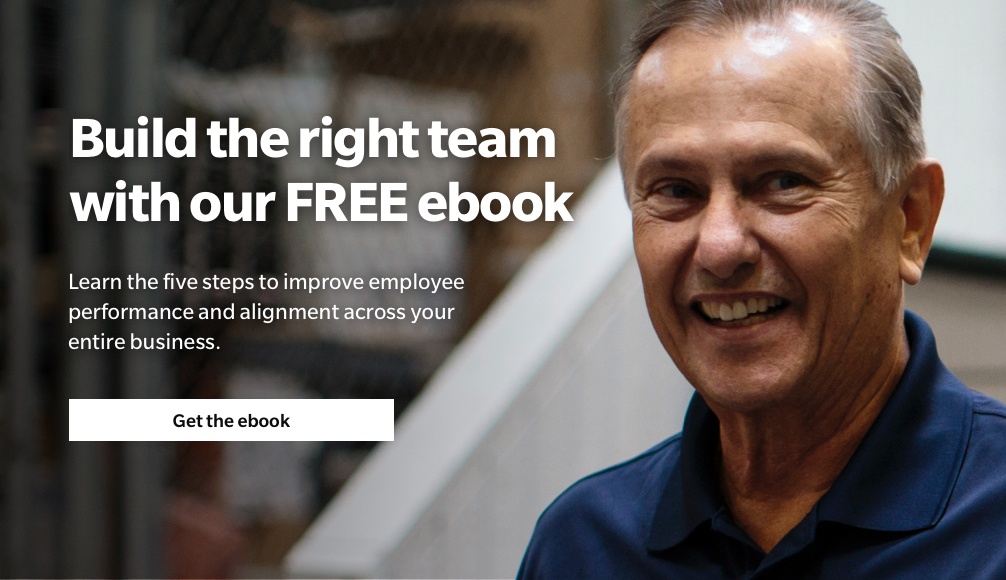When you’re a small business owner, you know all too well that the only constant is change. And chances are, you’ve had to make some major shifts in your company in response to the pandemic. One of the biggest areas of change universally has been adapting how we build, train and manage teams—all remotely. And that’s just one of the challenges: Unprecedented levels of turnover have shaped what some call “The Great Resignation”. But whether or not your team works remotely, a strong onboarding process for new hires is essential not just for training but for retaining employees. Here are some things to keep in mind when creating your onboarding system to ensure that your employees feel connected to your company and to the vision you have for your business.
What should an employee onboarding program do?
Do you have an onboarding program? At this stage, even if you have one, you may need to take a thoughtful look at how to improve the quality of your process to adjust to the turning tides of the job market. Whatever position you’re in, keep in mind the fundamental goals of a successful onboarding program:
- Set a good foundation.
- Prioritize social and interpersonal connections.
- Offer an open door for support for as long as needed.
Of course that all seems a bit harder to do remotely—but it's not impossible. All it takes is a strong system, thoughtfulness and oversight. Here’s how you can incorporate these fundamentals into your onboarding process, whatever the makeup of your business may be.
Set clear employee expectations from the beginning
In order for your employees to succeed, they need to be clear on the responsibilities of their role and the results you expect them to produce. A Position Agreement helps you communicate this information. It’s a written agreement that outlines specific work your new employee agrees to do as part of their position. On their very first day, a new employee should meet with their manager to go over this agreement, get a good understanding of their role and ask all the questions they have. It’s best practice to send a new hire their Position Agreement in advance, along with other required paperwork, so they have time to review and prepare.
Offer a new employee orientation
Having a comprehensive orientation for new employees is a given. They’re coming into your company knowing only what they’ve learned from your interview process and their own research. So, you need to teach them the way of your business—your way we do it here. And the best way to learn this is directly from leadership.
At EMyth, we spread this orientation period over several weeks, during which new employee(s) meet with all levels of management, from EMyth Board Chair and Co-Owner Ilene Frahm to their own direct manager, so they can get an understanding not only of the business, but their role in it as well.
These meetings should include the following:
- Company history
- Strategic objectives
- Company values
- Customer Experience (CX) principles
- Business model
- Organizational structure
- Annual goals
- Product and service overview
- Brand strategy
- Situation in the market
Ideally, you’ll have different team leaders conducting individual sessions that relate most to their area of expertise. This way, each employee hears from different perspectives, and gets a sense of how your values and systems show up in all areas of the business.
Schedule necessary trainings
When you’re used to all the systems and tools of your own business, it’s easy to take for granted that others aren’t. It’s important to remember that each new employee may know nothing about the tech platforms you use, your project management systems or your one-of-a-kind customer experience model. Put yourself in their shoes and figure out every aspect of what they need to perform their job to your standard every day. Then, set up trainings before their start date with the subject experts on your team.
Build in opportunities for social interactions
Especially in a remote environment, it’s incredibly important to develop social relationships with co-workers. Without it, employees working in a home office will soon feel isolated, performing their job in a bubble. But when they have a community that they’re excited to work with, who are ready to help, it makes a huge difference in boosting productivity and collaboration.
We orchestrate community building for new hires through team meet-and-greet sessions and a buddy system. Working in a dispersed team can feel very isolating, and we want each employee to feel like they’re part of our company from the beginning. Joining various team meetings gives them a sense of who everybody is and what they do, and the buddy system further supports this. Having a specific person (who may or may not be on the same team) to meet with regularly gives a new hire someone to ask questions like, “Well, what does this mean?” or “How do you handle that?”. For certain positions, that's really important to have.
Create an onboarding checklist
To do all of this well requires a lot of organization, so make it easy on yourself: Create a template that outlines all the meetings and trainings included in your onboarding process (we have our template built into Asana). You can use this to schedule each new employee for the first couple of weeks. Start by populating the template with regular meetings they should attend, such as your all-company meeting, weekly team meetings and your HR onboarding sessions. Then, use that framework to fill in all other trainings. Be sure the new employee and their manager both have a copy.
Offer a consistent onboarding experience for every employee
For one reason or another, employees can end up having uneven onboarding experiences. We’ve seen this happen when an employee didn’t function as a part of a team, or if they belonged to a disparate team that works fairly independently from the rest of the company. Here’s an example: Imagine a manufacturing company where people work on different sites. The people who work on the manufacturing floor may not have had the same onboarding as those who work in the marketing department. Of course, they learned all the basics of their job and the company overview, but they got less of the interpersonal connection. Because they worked in a totally different physical space, the logic was that they wouldn't necessarily interact with those folks anyway.
But situations like this not only create a sort of hierarchy—they also make it difficult to build the unity needed to achieve company goals. If you have a discrepancy in how different team members (or even entire departments) are onboarded, they don’t feel equally valued. So when coordinating social interactions and trainings for new hires, make sure that everybody gets the same level of attention and engagement. This will give them the sense that they’re a part of something connected to a network where they can do their best work.
As you develop your company’s onboarding process, expect that it will take at least two months before a new hire starts feeling like they’re really confident and comfortable in their job. And with certain positions that are less predictable, the process can be longer. So be patient, and focus on the fundamentals to ensure that everybody's thriving, everybody’s doing well and everybody has the tools they need. Because especially during a time of frequent turnover in the workforce, the more comfortable and supported people feel, the more likely they are to stay.
And whether or not your team is working remotely, if you need help refining your onboarding process, reach out today. We’re happy to help.





Comments